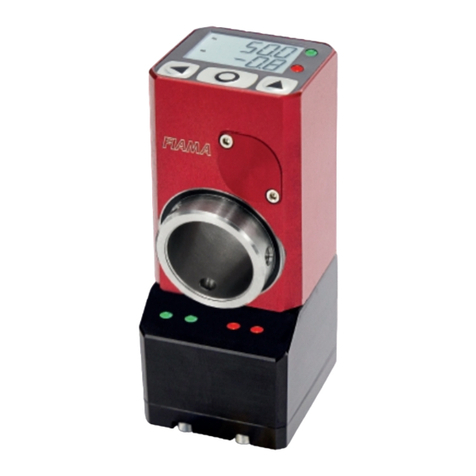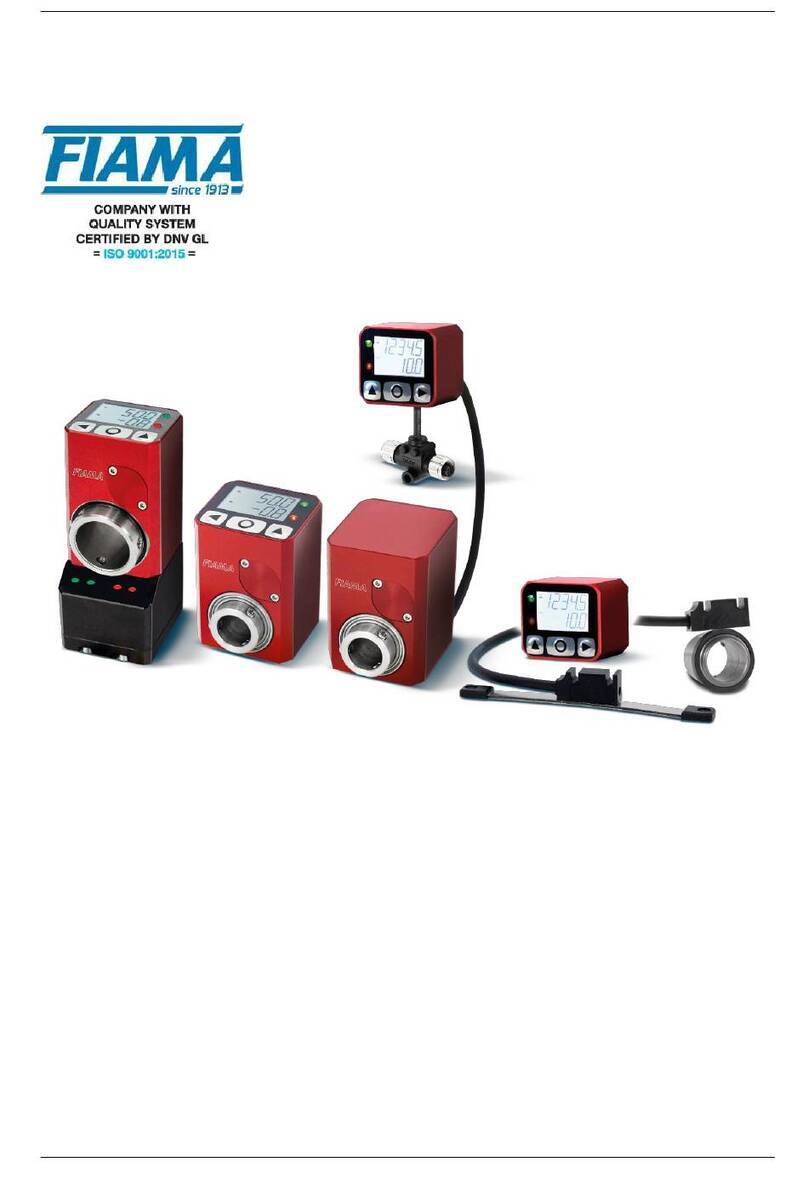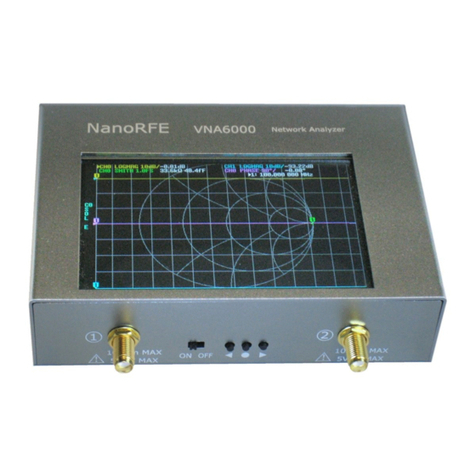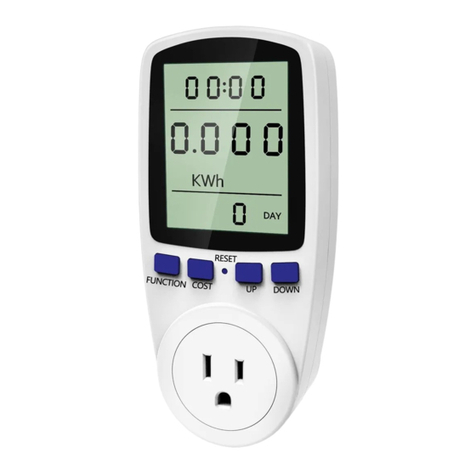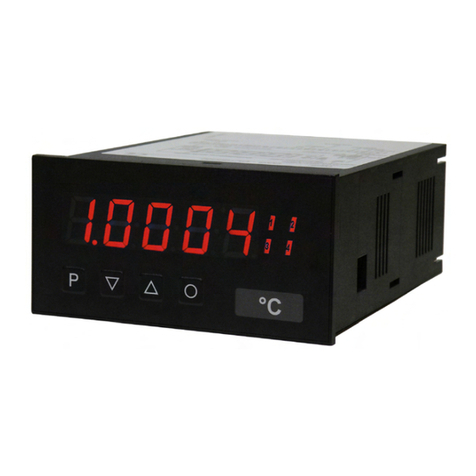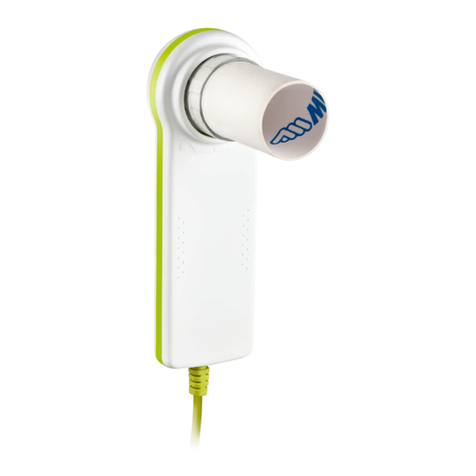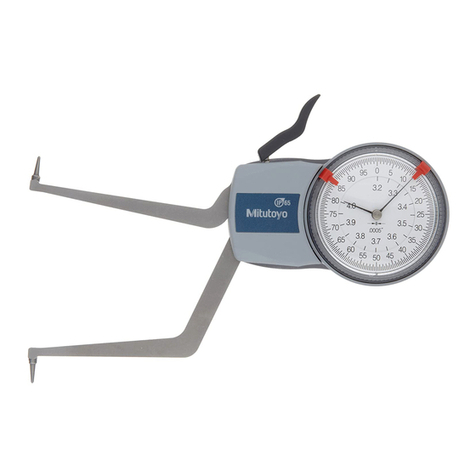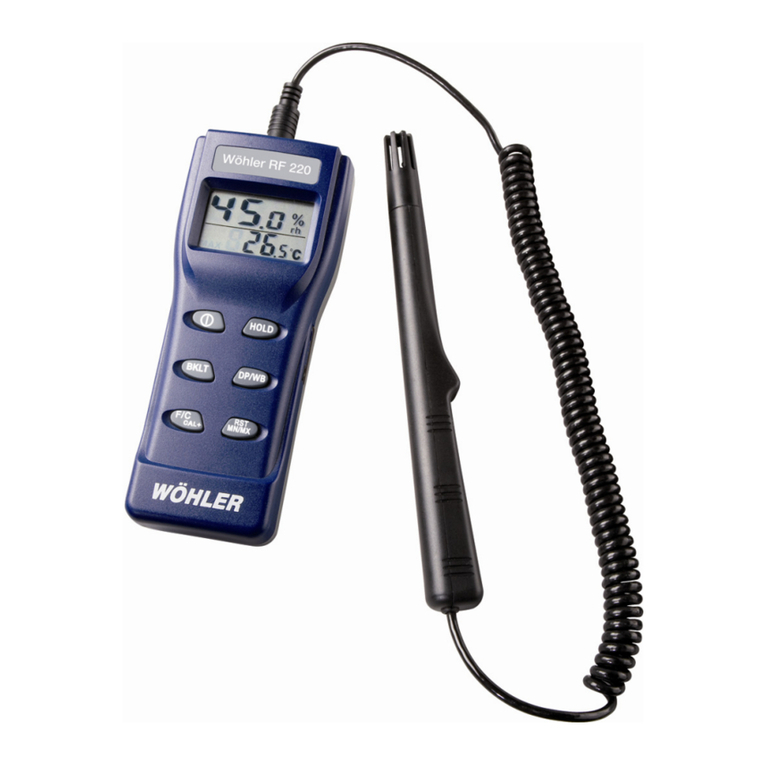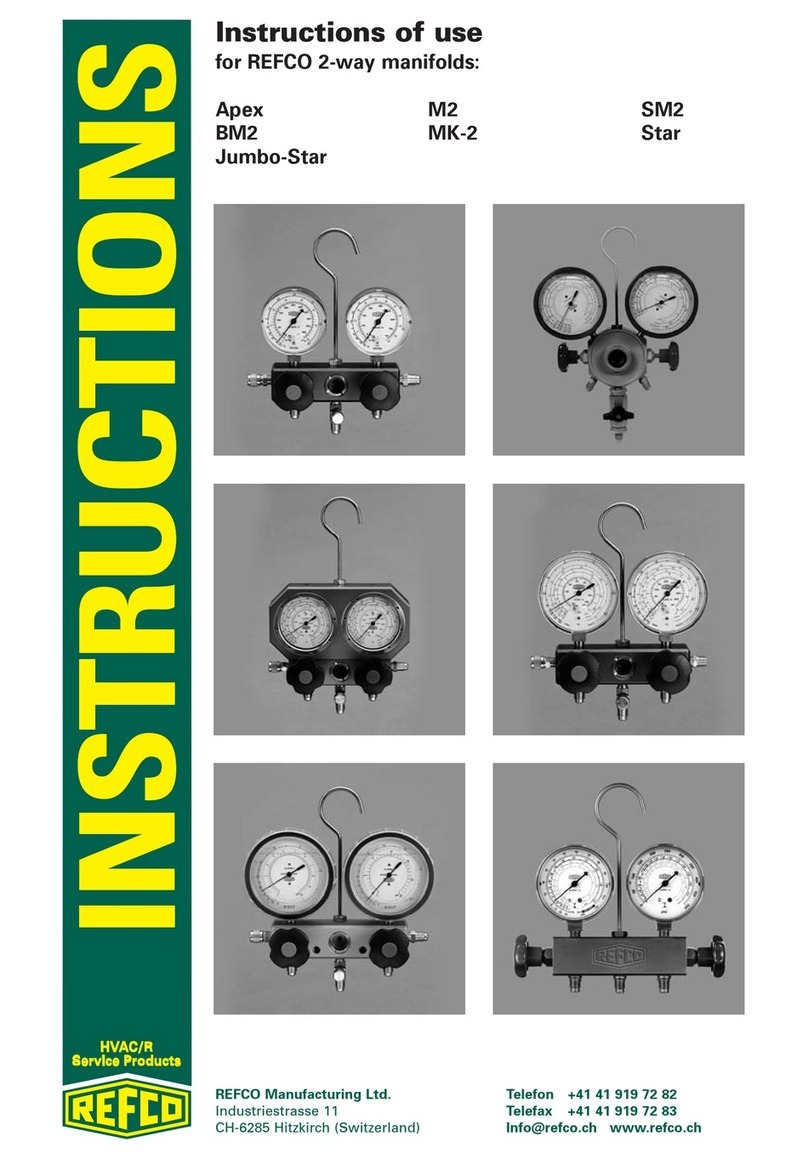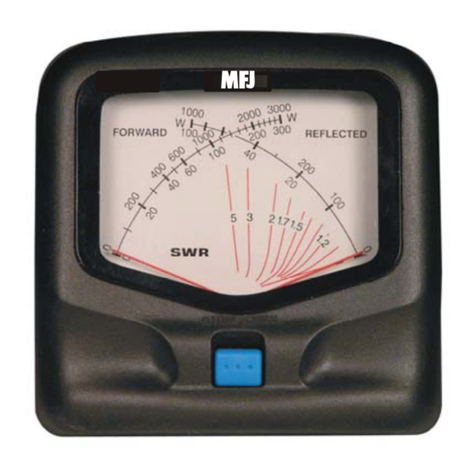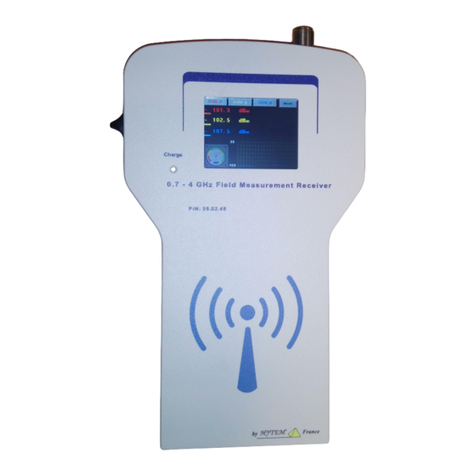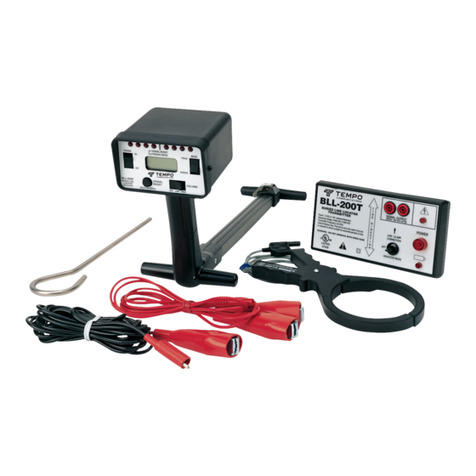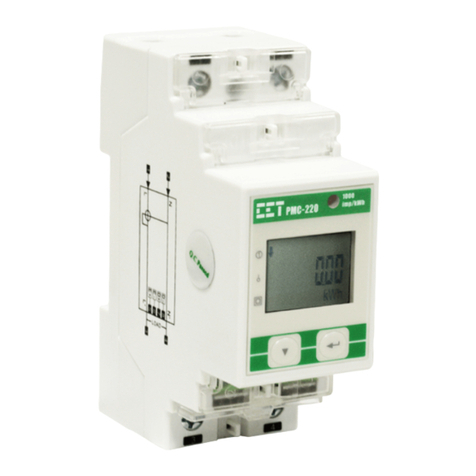FIAMA PFA3000T Guide

Potentiometric wire linear transducers PFA3000T-12000T
Data: 13/01/16 File: PFA_T_ing.doc Pagina: 1 di 6
USER’S MANUAL AND MAINTENANCE
LINEAR POTENTIOMETER WIRE-TRANSDUCER WITH ANALGOUE OUTPUT
PFA3000T, PFA4000T, PFA5000T, PFA6000T, PFA8000T, PFA10000T, PFA12000T

Potentiometric wire linear transducers PFA3000T-12000T
Data: 13/01/16 File: PFA_T_ing.doc Pagina: 2 di 6
Manual purpose
This manual has been designed by the Manufacturer to provide the necessary information regarding the
transducer PFA_ to those who are authorized to carry out safely its installation, maintenance, dismantling
and disposal. All the necessary information for the buyers and planners can be found in the Sales catalogue.
Other than adopting good technical construction methods, the information should be read carefully and
strictly applied. Inobservance of this information could cause risks for the health and safety of people and
economical damage. This information, provided by the Manufacturer in the original language (Italian) is also
available in other languages to satisfy legislative and/or commercial needs. A responsible person in an ideal
place must keep this manual in good conditions so that it is always available for consultation. In case this
manual is lost or deteriorates, a replacement should be requested directly from the manufacturer quoting the
manual’s code. This manual reflects the state of skill of the instrument at the time of input on the market:
however the manufacturer reserves the right to make changes, add or improve the manual without giving
any reason to hold the present manual inadequate.
Identification of the equipment
The identification plate represented is applied on the instrument.
To find out the identification code of the instrument, consult the sales catalogue.
Environmental conditions
Temperature setting: min. 0°C, max. + 50°C.
It is forbidden to use the instrument other than its specific use and in potentially explosive conditions or
where anti- explosive elements are used.
Storage
Here below are some references to be followed for the storage of the instrument.
Avoid environments with excessive humidity and those exposed to bad weather (avoid open areas). Avoid
putting the instrument directly on the ground. Store the instrument in its original packing.
Conformity declaration and EC marking
The instrument answers to the following Communitarian Directives:
2014/30/EU Electromagnetic compatibility, 2011/65/EU RoHS.
Maintenance
The instrument does not need a particular maintenance except cleaning to do only with a soft cloth dampen
with ethylic alcohol or water. Do not use hydrocarbon solvents (petrol, diluents, etc.): the using of these
products could affect the proper functioning of the instrument.
Reparations should be done only and exclusively at the FIAMA technical assistance centre.
Calibrations and tests
It is advisable to calibrate the instrument periodically, once every working year.
To do the calibration, follow the calibration procedure indicated in the present manual.
Assistance request procedure
For any kind of technical assistance request, contact the sales department of the Manufacturer directly
indicating the information given on the identification plate, the number of hours used and the type of defect.
Manufacturer’s responsibility
The manufacturer declines any responsibility in case of:
• Using the instrument contrary to the national safety and accident-prevention laws.
• Wrong installation, inobservance or wrong procedures of the instructions provided in the present manual.
• Defective electrical power supply.
• Modifications or tampering.
• Operations carried out by untrained or unqualified staff.
The safety of the instrument also depends on the strict observance of the procedures indicated in the
manual: always operate the instrument in its functioning capacity and carry out a careful routine
maintenance.
• All phases of inspection and maintenance should be done by qualified staff.
• The configurations provided in the manual are the only ones permitted.
• Do not try to use it anyway contrary to the indications provided.
• The instructions in this manual do not substitute but accomplish the obligations of the current legislation
regarding the safety laws.

Potentiometric wire linear transducers PFA3000T-12000T
Data: 13/01/16 File: PFA_T_ing.doc Pagina: 3 di 6
Description
The PFA3000T, PFA4000T, PFA5000T, PFA6000T, PFA8000T, PFA10000T and PFA12000T are wire
potentiometer position transducers that turn a linear motion into an analogue voltage signal 0-10V or current
signal 4-20mA. They are made of a precision rotating potentiometer operated by a winding or unwinding,
stainless steel wire. Stroke of 3200 mm for PFA3000T ,4200 mm for PFA4000T ,5200 mm for PFA5000T,
6200 mm for PFA6000T, 7200 mm for PFA7000T, 8200 mm for PFA8000.
Linked together to an electronic display (for example V3_ ,V4_ ,VE6_ ), it supplies a simple and effective
system to measure linear motions on cranes, rolling shutters, automatic wood, marble, glass-working
machinery etc., with a resolution of ±0.1 mm.
These transducers are carried out in case in oxidized aluminium.
Overall dimensions

Potentiometric wire linear transducers PFA3000T-12000T
Data: 13/01/16 File: PFA_T_ing.doc Pagina: 4 di 6
Mechanical mounting
The wire potentiometer transducer has to be mounted on a flat surface. The 4 fixing bores, two for every
side, allow a practical and fast assembling of the transducer on the carrying structure (see figure).
The stainless steel wire that is necessary for the measure goes fixed using the appropriate threaded screw
M6. To avoid folds or distortions of the thread do not to exceed the maximum stroke of the wire.
During the assembling do not loosen the wire of the transducer quickly but it has to be followed during the
winding. Always pull the wire along just its axis to avoid deviations higher then 2°.
Installation
Before installing the instrument, read the following warnings:
a) Connect the instrument strictly following the instructions of the manual.
b) It is the responsibility of the user to check, before using, the correct settings of the parameters of the
instrument to avoid damage to persons or things.
c) The instrument CANNOT function in a dangerous environment (inflammable or explosive).
The unit has sensible parts to electrostatic charge; therefore the handling of the inner electronic cards has to
be carried out with appropriate care to avoid permanent damages.
The working temperature has to be between 0-50°C.
Power supply
a) Before connecting the instrument, check that the power supply tension is within the permitted limits and
that it corresponds to the one indicated on the tag.
b) Carry out the electrical connections with the instrument disconnected.
c) For the power line to instruments and sensors, a power supply line separate from that of the power is
required: it is necessary to use an isolating transformer.
d) The power line should provide a device that separates the set fuses of the instruments and should not be
used to regulate relays, contactors, etc.
e) If the network tension is very disordered (ex. from the changeover of the power units, motors, inverters,
welders, etc.), use the appropriate filters of the network.
f) If an earth connection is needed, ensure that the plant has a good earth system: tension between neutral
and earth <1V and the resistance <6 Ohm.

Potentiometric wire linear transducers PFA3000T-12000T
Data: 13/01/16 File: PFA_T_ing.doc Pagina: 5 di 6
Connections entries and exits
Physically separate the entry wires from those of the power supply, the exits, and the power connections;
use twined and shielded wires with the display connected to the earth only at one point.
Connect the exits of adjustments, alarms (meters, electro valves, motors, ventilators, etc.) assembling units
RC (resistance and condenser in series) parallel to the charged inductive that work alternatively.
To reach the terminal block unscrew the 3 screws of the cover.
Analogue output calibration
The factory calibration previews an analogue output of 0-10V with 0V when the cable is all inside and 10V
with the cable all outside. It is possible to modify this calibration to refer all the range of the analogue output
to the stroke of the transducer really used or to change to the direction or the type (tension/current) of the
output. In all versions are available analogue outputs in tension and current but only one can be calibrate
correctly. It is not possible to have both outputs calibrate because the calibration of one excludes the other.
Before the calibration it is necessary to position the bridges J1 and J2 according to the direction of the
output: for increasing analogue output with the cable of the transducer in drawing the bridges go in position 2
(0Volt or 4mA in output with the cable all inside); for decreasing analogue output with the cable of the
transducer in drawing the bridges go in position 1 (10Volt o 20mA in output with the cable all inside).
To calibrate the output in voltage link a voltmeter on the terminals 3 (+) and 5 (-) of the terminal block.
To calibrate the output in current link a milliammeter on the terminals 4 (+) and 5 (-) of the terminal block.
Position the cable of the transducer on minimum position of the analogue output then turn the trimmer T1 to
bring the value of the output to 0V for the output in tension or 4mA for the out put in current (turn T1
clockwise to increase the output).
Position the cable of the transducer on the position that has to corresponds to the maximum of the analogue
output and turn the trimmer T2 to bring the output to 10V for the output in tension or 20mA for the output in
current (turn T2 clockwise to increase the output).
Bring the cable back to the minimum position and readjust T1, go back to the maximum position and readjust
T2.
Repeat the readjustments until reaching a perfect calibration.
The electric cable can goes out in two orthogonal directions: move the press-cable in the required position
and cover the other.
T2
T1
12
123456
J1
J2
1 GND negative power supply
2 +24V positive power supply
3 Vout analogue voltage output 0-10V
4 Iout current voltage output 4-20mA
5 Com common analogue output
6 not connected
For electrical connections always use a shielded cable (with shield connected to GND)
which must be kept separate from power lines or sources of electromagnetic interference.
Make the electrical connections with due care and attention: a failure due to a connection
error renders the guarantee null and void
The power supply must fall within the admissible range, a value exceeding this range or an
alternate current could damage the unit.

Potentiometric wire linear transducers PFA3000T-12000T
Data: 13/01/16 File: PFA_T_ing.doc Pagina: 6 di 6
Technical characteristics
Stroke PFA3000T: 3200mm - PFA4000T: 4200mm - PFA5000T: 5200mm
PFA6000T: 6200mm - PFA8000T: 8200mm - PFA10000T: 5200mm
PFA12000T: 12200mm
Max speed 0,5 m/s
Linearity ±0,25% max stroke
Power supply 24Vdc ± 20%, 1,5VA
Analogue output 0-10V, 4-20 mA selectable, insulated from power supply
Wire tension 550gr
Protection degree IP54
Working temperature 0 ÷50 °C
Relative humidity 35 ÷85 %
Weight 1500 gr
Case Anodized aluminium
Cable entries cable gland PG7 per cable ø 3÷6 mm
Electrical connection Terminal block
Electromagnetic compatibility 2014/30/EU
RoHS 2011/65/EU
Manufacturer
All communications to the manufacturer should be addressed to:
FIAMA s.r.l., Via G. Di Vittorio, 5/A - 43016 San Pancrazio (Parma) - Italy
Tel. (+39) 0521.672.341 - Fax. (+39) 0521.672.537 – e-mail: info@fiama.it - www.fiama.it
FIAMA srl is not responsible for any damage to persons or things caused by tampering and wrong
use and in any case that are not consistent with the features of the instrument.
This manual suits for next models
6
Table of contents
Other FIAMA Measuring Instrument manuals

